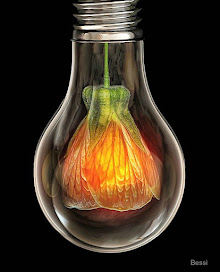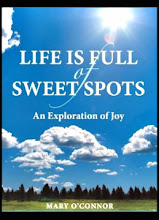
Butter tart; the sound of the two words strung together are pure poetry. Say the name once and the alliterative “r”s wrapped at their ends make the lips purse slightly, revealing a mouth that looks like a child’s begging for a morsel. Say the name twice and the appetite instantly registers the delectable thought of taste buds taking a bath in sweet butter with a flourish of perfectly flaked crust.
I first encountered butter tarts on a trip to Parry Sound in Ontario, Canada. My husband and I were staying at a family cottage on Crane Lake when our hostess, Kathy Fenwick, pulled out a tray of 24 miniature butter tarts she purchased at a local Walmart. Her eyes twinkled with excitement as she broke the seal, “They don’t have these stateside. I can only get them when we’re in Canada because they're a local kind of thing. You really ought to try one.”
The petite butter tarts were arranged in six rows of four and resembled a collection of defective pecan tarts that didn’t get the proper smattering of crushed nuts somewhere along the Walmart conveyor belt line. A caramel-colored filling gave each pastry a generic and less than seemly appearance. Something in my mind could not reconcile the words “Walmart” and “local”, so I did not partake. That changed the next day and was prompted by a Crane Lake remembrance ceremony for Tom Horsman, a family friend who died in 2010.

The water was particularly placid on the day four boats gathered at Mr. Horsman’s favorite Crane Lake fishing spot. Many in attendance had recently lost loved ones (all fishing enthusiasts) and as a family friend eulogized, created an “overlap of souls” in our presence. Tom's daughter Cynthia cast her father's fishing rod with his favorite lure into the lake and drew it back as memories and tears were shared. We were in the boat with Aunt Kathy when she sent a miniature butter tart sailing on the surface of the lake adorned with a few yellow mums

Aunt Kathy’s thoughtful gesture was inspired by the fact that Tom Horsman loved butter tarts and couldn’t wait to eat them when he and his family arrived at their lakeside cottage. The poignancy stuck, as did a curiosity for butter tarts. I tried Walmart’s version when we got back to the cottage. It was good, but the thought of finding the real thing and uncovering its history was even better.
The next day my husband, Kathy and Sally Lake (the aforementioned eulogist and serious butter tart enthusiast) powered up the boat, arrived at the dock and made a beeline for the car. We drove into town and parked a few steps away from the Country Gourmet Deli, Bakery and Café on James Street. There was a giant wooden moose at the front door and from a distance it didn't seem like there was anything particularly compelling about their offerings. When you stepped inside and arrived at the dessert case everything changed.
Gone was the commercial precision of bakery chains where each category of pastry looks so perfect the notion of human hands being involved simply never crosses the mind. Each offering at the Gourmet Deli, Bakery and Café had a designated shape that was noticeably handmade. The tarts and cookies were marked by a familiar sandy hue that typifies all-purpose flour used by home bakers. The names of each pastry were handwritten in black script on white rectangles of paper; some were legible, some were a little hard to read because the black ink bled through the paper. This was no Walmart.
Gourmet Deli, Bakery and Café offers a variety butter tarts including regular, raisin, pecan and chocolate pecan. Each tart is hand-crimped and resembles a flower. The center has a slightly hardened glaze that conceals the mark of butter tart excellence; a buttery sweet syrup filling that rushes out to meet an eagerly held spoon (or mouth when there is a native Canadian on the other end; some children and adults have mastered the art of eating a butter tart this way despite the fact that the ambrosial goodness in the center has a tendency to run down one's chin). Canadian writer and etymologist Bill Casselman refers to Canadian butter tarts as the "northern nectar of the oven" which is the best description I've come across.
Butter tarts are unique to Canadian foodways, but one cannot discount the influence of immigrants to the country; particularly the Scottish and their Ecclefechan butter tart. According to Sheldon Posen, curator for Canadian Folklife, Ethnology, Cultural Studies at the Canadian Museum of Civilization, "No one else has a butter tart. There are several relatives (or some would say, ancestors) usually cited, such as treacle tart (England), pecan pie (Southern U.S.), black bottom pie (Mennonite), sugar pie (French Canada). But all of these use sweet syrupy bases (molasses, corn syrup, maple syrup) or rely for their identity on additions (pecans). Granted, most have butter in them, but that is not their defining feature. The classic Canadian butter tart uses creamed butter and sugar as its base."
The annual Brampton Fall Fair has run a butter tart competition for decades and competition is fierce. So are the politics regarding what a "true" butter tart is. (The one I ate from Gourmet Deli, Bakery and Café included a touch of maple syrup in the center that may be scoffed at by purists.) The Sweet Oven Inc. in Barrie, Ontario offers 20 varieties of butter tarts, and they reside in the area where the original recipe for butter tarts was published in The Women’s Auxiliary of the Royal Victoria Hospital Cookbook in 1900.)
Toronto Star food writer Marion Kane, writer Max Burns and artist Charles Pachter were interviewed in 1991 by CBC radio and shared their opinions regarding the pedigree and history of butter tarts. All agreed that the mark of a great butter tart is a slightly runny center. I side with all of them. My only regret is that it will be at least a year until I'm in cottage country again. I'll have to dream about butter tarts for now. Thanks Tom Horsman.
Notes:
Tom Kydd (my father-in-law) and Tom Horsman were best buddies on Crane Lake and knew each other since childhood. Both passed away within months of each other in 2010. My father, Paul Krell, died a year before Tom Kydd did and was an avid fisherman himself. Tom Kydd and my father both served in the U.S. army during the Korean conflict. Dad was in the first division and was stationed in Schweinfurt, Germany. Coincidentally, my father-in-law was in the tenth division which replaced the first division after they had left. Whether she knew it or not, Sally Lake's comment regarding the overlapping of souls was a part of the earthly spectrum of life for both.
The Country Gourmet Bakery Cafe is located at 65 James Street, Parry Sound ON P2A 1T6. Phone: (705) 746-5907.
The New York Times published a recipe for Butter Tarts a few years after this article was published. It's worth making.
The photograph of Cynthia's hands with father Tom Horsman's favorite fishing lure taken by Ted Steeble. All rights reserved.
The photograph of "The Two Toms" taken by A.J. Kydd. All rights reserved.
Additional photographs taken by Michelle Krell Kydd. All rights reserved.
Tom Kydd (my father-in-law) and Tom Horsman were best buddies on Crane Lake and knew each other since childhood. Both passed away within months of each other in 2010. My father, Paul Krell, died a year before Tom Kydd did and was an avid fisherman himself. Tom Kydd and my father both served in the U.S. army during the Korean conflict. Dad was in the first division and was stationed in Schweinfurt, Germany. Coincidentally, my father-in-law was in the tenth division which replaced the first division after they had left. Whether she knew it or not, Sally Lake's comment regarding the overlapping of souls was a part of the earthly spectrum of life for both.
The Country Gourmet Bakery Cafe is located at 65 James Street, Parry Sound ON P2A 1T6. Phone: (705) 746-5907.
The New York Times published a recipe for Butter Tarts a few years after this article was published. It's worth making.
The photograph of Cynthia's hands with father Tom Horsman's favorite fishing lure taken by Ted Steeble. All rights reserved.
The photograph of "The Two Toms" taken by A.J. Kydd. All rights reserved.
Additional photographs taken by Michelle Krell Kydd. All rights reserved.









